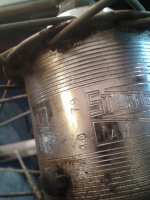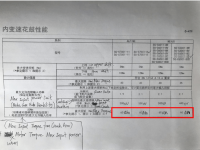Pete Leaviss said:
Always find it strange when people completely shut things down when they're not entirely sure what they're talking about. No offense Wolf man.
FWIW, my name is not "wolf man".
I do know what I am talking about, and I am not "completely shutting things down". I'm pointing out an error, that in this case happens to also be off topic for the thread.
Of course you can use a hubmotor with a BB gearbox. What makes you think you wouldn't be able to do that?
"With" is not "through".
Based on your replies, I don't think you fully understand what this thread is about, even though i pointed you to the first post where the topic was "defined". I'll requote it in case you didn't read it:
Drunkskunk said:
Who makes the best internal geared hub for putting motor power through?
it also has a link (little arrow) to the first post.
It is about running the power of motor *through* the gearbox, so that you can keep the motor in it's efficient range for different conditions.
What *you* are talking about does not include that ability, and does not apply here. What you are talking about makes a completely separate drivetrain for pedals and motor that does *not* provide a multi-ratio gearbox for the motor, only for the pedals. Not the point of this thread. Niether of the systems you link to drive the gearbox ffrom the hubmotor, they do not give the motor gearing.
There *are* applications around the forum that *do* use a gearbox *only* for pedalling, including my SB Cruiser trike (which uses the IGH in the frame rather than the wheel), but this thread is not about that.
If you like, you can post OT stuff in a thread but the point is simply that the hubmotor in a wheel isn't *using* the gearbox, so it *is* off-topic.
Of course you can't use a BB gearbox with a mid drive.. they're in the same location!!
Yes, you can, with the Stokemonkey type, as I said. It drives the left crank just as if you were pedalling (or like a stoker on a tandem, hence the name), so it would work on a BB gearbox, which is driven by the cranks. THere are other drive systems that also drive the left crank this way, so power is transferred thru the BB crankshaft, and would also work with a BB gearbox. The only concern would be whether the BB gearbox could handle the torque input (especially if pedalling were also being done, under a high load).
It's just not done with the more common middrives that drive thru the rightside chainring set that directly drives the chain. (even some to many of those could be mounted in a way that would allow it, but it would take quite some doing and defeat the purpose of their design, to make them easy to mount and use).




